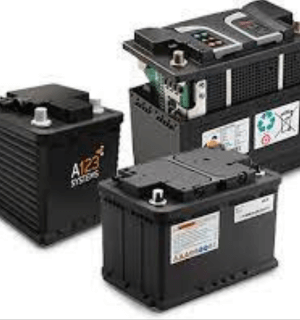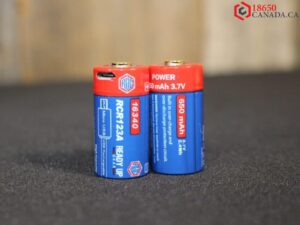With the rapid growth of electric vehicles (EVs) and the increasing adoption of lithium-ion car batteries, the question of their recyclability has become more pertinent than ever. As the world seeks sustainable solutions and a reduction in carbon emissions, understanding the recyclability of lithium-ion car batteries is crucial. In this article, we will delve into the recycling process of these batteries, the challenges involved, the benefits of recycling, and explore the potential future developments in this field.
1. In this Blog Post, We Explore the Recyclability of Lithium-Ion Car Batteries.
We discuss the composition of these batteries, the importance of recycling, and the challenges involved. The article covers the recycling processes, environmental benefits, economic opportunities, and future developments in battery recycling. It emphasizes the role of consumers, government, and industry in promoting sustainable practices. Safety precautions, disposal alternatives, and recycling best practices are also highlighted. The article concludes by emphasizing the significance of battery recycling for a greener future.
In recent years, lithium-ion car batteries have gained significant popularity due to their high energy density, long lifespan, and rechargeable capabilities. These batteries have become the preferred choice for electric vehicles, contributing to the shift towards cleaner transportation and reduced reliance on fossil fuels. However, the growing concern about the environmental impact and the need to manage the end-of-life phase of these batteries has led to an increased focus on their recyclability.
2. Understanding Lithium-Ion Car Batteries
Before exploring the recycling process, it’s important to understand the composition of lithium-ion car batteries. Rechargeable lithium-ion batteries are composed of multiple vital elements, encompassing a positive electrode known as the cathode, a negative electrode referred to as the anode, a separator, and an electrolyte. These components work in harmony to facilitate the efficient storage and release of electrical energy within these advanced battery systems.
The cathode typically contains lithium cobalt oxide, lithium manganese oxide, or lithium iron phosphate, while the anode consists of graphite. The separator prevents direct contact between the cathode and anode, and the electrolyte facilitates the movement of lithium ions during charging and discharging.
3. The Importance of Battery Recycling

Battery recycling plays a vital role in minimizing the environmental impact of lithium-ion car batteries. Recycling helps to recover valuable materials, reduce the demand for raw materials, and prevent hazardous substances from entering the environment. Additionally, proper recycling reduces the need for new battery production, conserves energy, and reduces carbon emissions associated with manufacturing processes.
4. Challenges in Recycling Lithium-Ion Car Batteries
Despite the benefits of recycling, there are several challenges associated with the recycling of lithium-ion car batteries.
Battery Composition
Lithium-ion car batteries consist of various materials, some of which are valuable and recyclable, while others are hazardous or difficult to separate. The complex composition makes the recycling process more challenging and requires specialized techniques to extract and recover valuable materials efficiently.
Safety Concerns
Lithium-ion batteries can pose safety risks during the recycling process. These batteries can be prone to thermal runaway, which may result in fires or explosions if mishandled. Proper safety protocols and handling procedures are essential to ensure the safe recycling of lithium-ion car batteries.
Infrastructure and Collection Systems
Another challenge is the lack of well-established infrastructure and collection systems for lithium-ion car batteries. Proper collection and transportation of used batteries are crucial for effective recycling. The development of collection networks and recycling facilities is necessary to streamline the recycling process and make it more accessible.
5. Recycling Processes for Lithium-Ion Car Batteries
The recycling of lithium-ion car batteries involves several stages, each designed to maximize material recovery and minimize environmental impact. Here are the key steps involved in the recycling process:
Pre-Treatment
In the pre-treatment stage, batteries are sorted, and the external components, such as plastic casings, are removed. The batteries are then discharged to minimize any remaining charge.
Battery Disassembly
After pre-treatment, the batteries undergo disassembly, where they are taken apart, separating the cathode, anode, separator, and electrolyte. Disassembly can be done manually or using automated processes, depending on the scale of recycling operations.
Battery Shredding
Once disassembled, the batteries are shredded into smaller pieces, allowing for better separation of materials. The shredded material is then sorted further using various techniques, such as magnetic separation, to separate metals from other components.
Material Recovery
After shredding and sorting, the recovered materials, including lithium, cobalt, nickel, manganese, and graphite, undergo further refining and purification processes. These materials are then ready to be used in the production of new batteries or other applications.
Refining and Reuse
Refining processes are employed to ensure the recovered materials meet the necessary purity standards. Depending on the specific material, additional treatments may be required before they can be reused. High-purity materials are utilized in battery production, closing the recycling loop.
6. Environmental Benefits of Recycling
Recycling lithium-ion car batteries offers several environmental benefits. By recovering valuable materials, recycling reduces the need for new mining operations, conserves natural resources, and minimizes the carbon footprint associated with raw material extraction. Recycling also prevents hazardous substances from entering landfills or being improperly disposed of, safeguarding the environment and human health.
7. Economic Opportunities in Battery Recycling
Apart from the environmental benefits, battery recycling also presents significant economic opportunities. The recycling industry creates jobs, stimulates local economies, and promotes innovation. As the demand for electric vehicles and lithium-ion batteries continues to rise, establishing a robust recycling infrastructure can lead to a sustainable circular economy.
8. Innovations and Future Developments
The field of battery recycling is constantly evolving, and there are ongoing efforts to develop more efficient and sustainable recycling technologies. Researchers are exploring innovative methods to increase material recovery rates, improve the safety of recycling processes, and find new applications for recycled materials.
9. Consumer Role in Battery Recycling
Consumers play a crucial role in the recycling of lithium-ion car batteries. It is essential to educate consumers about the importance of recycling and provide convenient collection points for used batteries. Increased consumer awareness and participation can significantly contribute to the success of battery recycling programs.
10. Government and Industry Initiatives
Governments and industry stakeholders are taking steps to promote and support battery recycling. Regulatory measures, financial incentives, and collaborations between different stakeholders aim to create a sustainable recycling ecosystem. These initiatives help address the challenges and drive the development of effective recycling practices.
11. Recycling Best Practices
Adopting best practices in battery recycling ensures maximum material recovery and minimizes environmental impact. This includes investing in advanced recycling technologies, optimizing collection systems, and implementing safety standards throughout the recycling process.
12. Disposal Alternatives
In cases where recycling is not feasible due to the condition of the battery or lack of recycling facilities, proper disposal is essential. Batteries should be disposed of according to local regulations to prevent potential harm to the environment and human health.
13. Safety Precautions
Safety is paramount when dealing with lithium-ion car batteries. Proper training, handling procedures, and safety protocols must be followed during the collection, transportation, and recycling processes. This ensures the protection of workers, the environment, and the surrounding communities.
14. Final Thoughts
Lithium-ion car batteries are recyclable, and their recycling plays a crucial role in achieving a sustainable and circular economy. The recycling process involves pre-treatment, disassembly, shredding, material recovery, and refining for reuse. While challenges exist, such as battery composition and safety concerns, ongoing innovations, and government initiatives are driving advancements in battery recycling. By recycling these batteries, we can reduce environmental impact, conserve resources, create economic opportunities, and contribute to a cleaner and greener future.
Frequently Asked Questions (FAQs)
1. Can All Lithium-Ion Car Batteries Be Recycled?
Yes, in most cases, lithium-ion car batteries can be recycled. However, the availability of recycling facilities and the condition of the battery may impact the feasibility of recycling.
2. Are There Any Risks Associated With Recycling Lithium-Ion Car Batteries?
Lithium-ion batteries can pose safety risks during the recycling process due to the potential for thermal runaway. Proper safety precautions and handling procedures are necessary to mitigate these risks.
3. What Happens to the Materials Recovered From Recycled Batteries?
The materials recovered from recycled batteries, such as lithium, cobalt, nickel, and graphite, can be reused in the production of new batteries or other applications.
4. How can Consumers Contribute to Battery Recycling?
Consumers can contribute to battery recycling by properly disposing of used batteries in designated collection points and participating in battery recycling programs.
5. What are the Environmental Benefits of Battery Recycling?
Battery recycling helps conserve natural resources, reduce carbon emissions associated with raw material extraction, and prevent hazardous substances from entering the environment.

